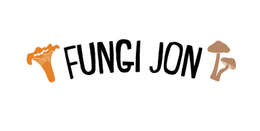
WAS SANTA A MUSHROOM SHAMAN? Meet Amanita persicina, the “peach-colored fly agaric”. In Florida, this is the closest mushroom we get to Amanita muscaria - the archetypal mushroom embedded throughout popular culture, from Mario Brothers to emojis, and even Christmas legend, which is intertwined with countless similarities to Siberian shamanic traditions utilizing A. muscaria. Originally considered a variety of Amanita muscaria, genetic evidence shows that this is actually a distinct species rather than a variety of A. muscaria as previously thought. A number of features distinguishes them from one another, though they share the same chemistry. Learn identification in depth at the end of this page!

Jon Martin with Amanita muscaria near Mount Hood, Oregon
The similarities of Amanita muscaria to Christmas legend are absolutely unmistakable. Someone was very inspired! From the mushrooms colors matching Santa's red & white clothes, to the fact that they grow underneath conifers appearing as gifts underneath trees overnight, to reindeer naturally seeking out and consuming A. muscaria in Siberia, to the sensation of flying often reported by users, even to the preparation method of dehydrating and heating the mushrooms in sacks over a fire. The list goes on! Check out this video from BBC to bring it all together: https://www.youtube.com/watch?v=MkCS9ePWuLU
All that being said- as a species with both psychoactive and somewhat toxic effects, special caution is advised when considering exploration of any psychoactive Amanita with more than just the hands and eyes. This species is known to produce unpleasant intoxication characterized by nausea, gastrointestinal upset, headaches, and other adverse reactions, especially when eaten raw or without following advised preparation methods. It contains ibotenic acid and muscimol - two non-lethal compounds responsible for its various effects, rather than the deadly amatoxins found in certain species within the genus. Ill-effects are mitigated or lessened while maintaining psychoactive qualities by specific processing involving dehydration and heat exposure - a procedure which promotes decarboxylation of ibotenic acid (often considered a neurotoxin in high doses) into the less toxic, easier-to-metabolize muscimol (an analogue of GABA neurotransmitters).
Reported effects according to several studies and journals are a meditative or sedated sensation, muscle relaxation, and pain relief, while others report an inebriation similar to alcohol with some deliriant and visionary qualities, which often begin after waking from a coma-like sleep induced by the mushroom's effects. Interesting "fung facts": studies show that extracts of ibotenic acid are almost 20 times more powerful than MSG as a flavor enhancer! (Wasson 1979) Additionally, its common name "fly agaric" also stems from the folk method of soaking the mushrooms in a bowl of milk to attract flies who unsuspectingly drown in the milk; a form of organic pesticide, if you will.
Dear beginners: I would highly suggest to avoid this species for any purpose other than admiration and study. For those more experienced and confident in mushroom identification: many collectors prepare this species for the table without psychoactive or toxic effect by doing two 7-minute parboils, draining and renewing boil water each time, then finishing by cooking into a dish. I have yet to try myself, but the flavor is reportedly good. A bit of work perhaps, but for the novelty and fascination brought to a mycology enthusiast from this species, it’s a labor of love!
HOW TO IDENTIFY AMANITA PERSICINA:

With a preference for slightly cooler habitats, you’re more likely to find this fungi dwelling in northern parts of Florida towards the panhandle and Georgia. Its primary home is the Southeastern US, though some observations extend up into New Jersey. Like all Amanitas, this species is ectomycorrhizal, meaning that its mycelium associates with a host tree, wrapping itself around root tips to exchange nutrients, so both partners can thrive as symbionts. The specimens I photographed here were found growing in association with loblolly pine in Gainesville, FL, but the species is known to associate with Virginia pine and eastern hemlock as well. Some have also reported association with slash pine and longleaf pine in Florida.

Amanita persicina displays primarily yellowish-orange tones with reddish hints on the cap surface, often resembling the color of peaches. The upper surface is covered by fragmented cottony warts resembling small globules of cottage cheese. These warts are remnants of the universal veil - an all-encompassing membrane present on younger specimens in genus Amanita, serving as a protective "eggshell". Also observe the membrane covering the underside of the younger specimen on the left in photo #1 - this is a partial veil, which protects the fertile surface of young specimens, until it eventually breaks at a later stage and leaves behind the skirt-like ring on the lower middle portion of the white stalk. If you look deeper (you literally might have to dig a little), you'll observe a large bulb at the base of the stalk. Another important observation is the scattered patches or "fine ringlets" just above the bulb: more remnants of the universal veil.
You have been bestowed with fungal knowledge. Happy mushrooming, merry Shroomsmas, and to all a shroomy night-

Leave a comment